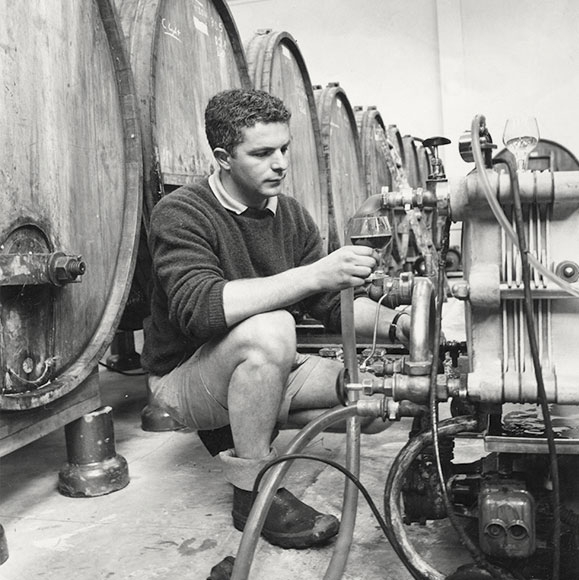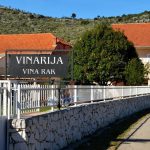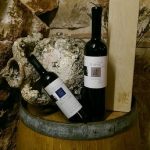We begin our look into some of the winemakers that have left the mark on the global wine scene and that are part of Croatian diaspora with a New Zealand wine maker: George Fistonich.
There were 5 major waves of Croatian emigration to New Zealand. During one of those waves, in 1920’s, young family from Hvar, Andrija and Mandica Fistonić, moved to New Zealand, and there in 1939 his son, George was born. Second of four children, his parents have planned for him to become a carpenter, “to have a trade in his hand” (as Croatian parents often say to their children) and build a house. George, however, had other plans, and although his father was not the biggest fan of the idea of his son becoming a winemaker, he decided that he would let some of his land to his son for him to start a vineyard.
So, in 1961 George leased the 5 acres in Mangere, Auckland, and started his company Villa Maria and a career that would eventually make him the owner of the largest privately-owned winery in New Zealand, winner of numerous awards for his wines and entrepreneurship, and finally a knight, as he was given the title Sir in 2009 (he received the country’s first knighthood for his services to the New Zealand wine industry). Although New Zealand did not have a large winemaking tradition at that time, many Croatians were very active in the vineyards and the cellars, as well-known New Zealand winemaking families Nobilo, Selak and Babich started around the same time.
But George Fistonich had a great start to his winemaking career: in 1963, with some of the first wines he made, he won several awards at the first competition he entered! Those early years were mostly spent making sherry and port wines, since that was the type of wines held to greatest esteem in the country without much winemaking tradition. In the years to come, however, George Fistonich was among the winemakers who started changing the landscape of New Zealand wine, as he purchased more vineyards, several companies and started growing the varieties coming from the continental Europe, ones used to somewhat colder climate similar to one on New Zealand, and the first significant varieties were sauvignon blanc, rhein riesling and traminac, and only later did they start growing red wine varieties.
The history of Fistonich’s company (or holding) reads almost like a novel: for almost 10 years George and his wife Gail were the only employees at the company, and only after the initial success did they start expanding, employing highly skilled people and purchasing other wineries. Today they employ over 200 people full time, and own 900 acres of vineyards across New Zealand (major vineyards are located in Gisborne, Hawke’s Bay, Marlborough and Auckland), and they own several wineries that produce their own branded wines, such as Villa Maria, Vidal, Esk Valley, Thornbury, Riverstone, Kidnapper Cliffs and Te Awa. Today the Villa Maria group, like many New Zealand wineries, mostly produces sauvignon blanc, chardonnay, riesling, ‘Bordeaux’ varieties (merlot, cabernet sauvignon and malbec), pinot noir and syrah. One of Georges focuses in making wine is maintaining regional differences in relation to grape quality and wine styles. He was also one of the first wine business owners in New Zealand to employ professional viticulturists, recognising the importance viticulture plays in the quality of the wine.
In 1980’s the company had a somewhat rough period, facing very difficult times financially, during which period George Fistonich lost ownership of almost half of his company, but luckily for him and the entire winemaking industry on New Zealand, he managed to bounce back, again become the full owner of the company and continue to innovate the New Zealand winemaking. In 1988 Villa Maria was among the first New Zealand wine exporters, and Fistonich admits that he was often asked “Do you guys in New Zealand really know how to make wine?” in the early days of those export attempts. Nowadays, Villa Maria Estate’s wines are distributed to over 50 countries, most of the export goes to the United States and the Great Britain, but they are also exported across Europe and the Caribbean, Asia, Australia, as well as to the Pacific Islands.
And, after establishing the successful export of his wines to the demanding markets where good wine is recognized and appreciated, George Fistonich decides to innovate again. This time it seemed that the innovation might really harm him, as in 2001 Villa Maria was the first major wine company in New Zealand to declare that the winery would become a “cork-free zone”, sealing all wines from the 2002 vintage onwards with a screwcap. The decision was made for the sake of quality, as his assessment is that they lost up to 10% of their wines to bad corks, and screwcaps would solve that problem for New Zealand winemakers. That decision caused a lot of turmoil, initially they lost a lot of customers, both old and new, and they took a large blow in the United States. Eventually, through a lot of hard PR work and effort in explaining that decision to their customers, sommeliers and restaurant they were able to recover any lost business. And after most other wineries on New Zealand accepted that the change Fistonich implemented was increasing the quality of their wines, today almost 95% of wines made on New Zealand are bottled with screwcaps, not corks.
Nowadays, the company is strong, still the largest privately owned New Zealand winery (6th overall), and still proud in the work they did for the winemaking and wine-drinking culture in New Zealand. Cellar doors are open to the public at their wineries, they have on-site cafes and restaurants as well, and all of those have helped disseminating the wine culture that is now quite strong on the Seventh continent. Villa Maria Estate has given up on counting the awards and medals their brands were able to gather throughout the years, as they are regarded to be the most awarded New Zealand winery. Although not a young man any more, Sir George Fistonich still runs his business (his daughter Karen is on the board of the company), has new ideas for new varieties that should be planted in some of his vineyards to test the results they would yield. He has visited Croatia recently, vacationed here including visiting the island where his ancestors are from – Hvar. Some of his wines are also imported to Croatia, through their distributor Dobra vina.











